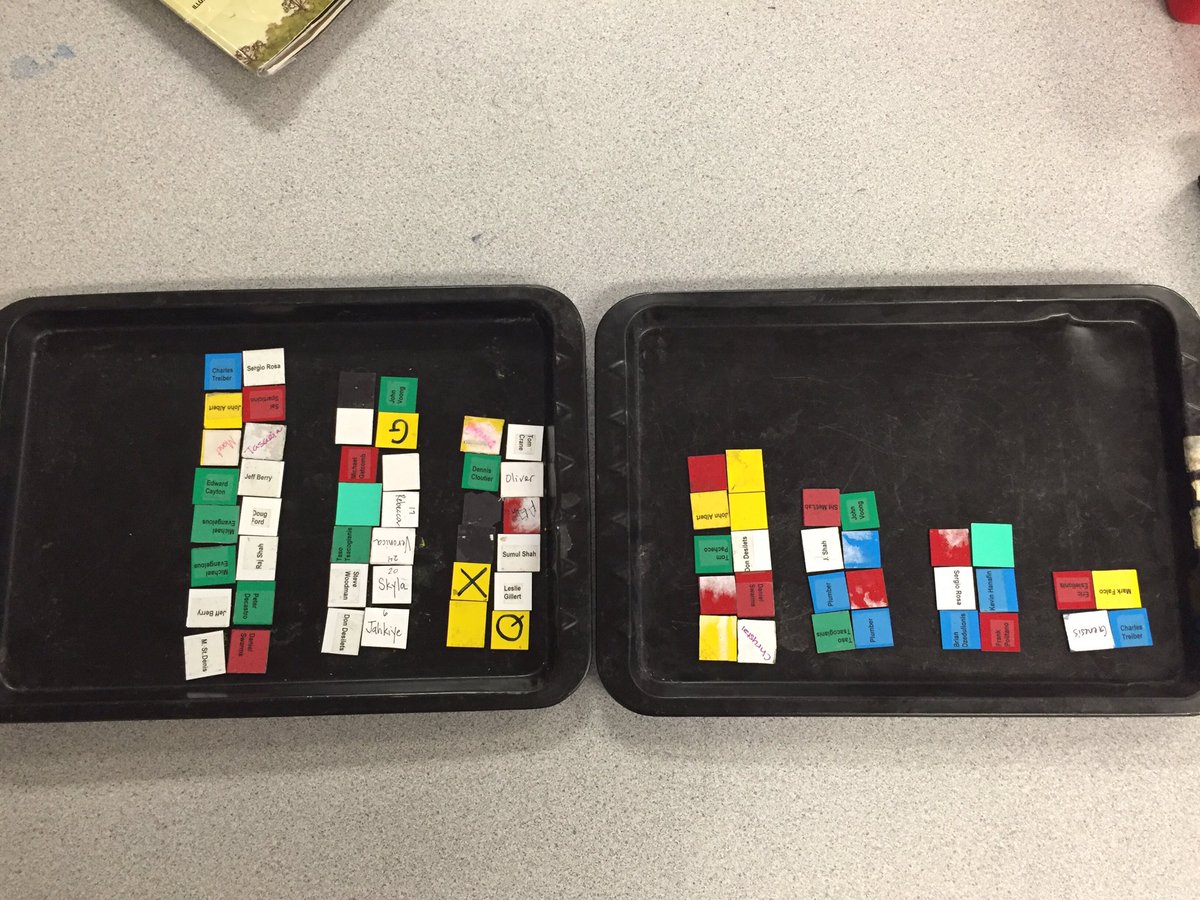Since then, he's been very quiet, rarely speaking during academic times. He is sometimes rude, perhaps unintentionally, when he does speak. He loves to run and jump, even in the classroom. He has broken a few of my things, sometimes on purpose. We are working hard to figure out what makes him tick, what kind of a learner he is, and what his strengths are.
Yesterday in math class, we talked about how good it is for our brains when we connect images, designs, colors, pictures, and patterns to numbers. Then we looked at pictures of arrays in real life. Students had a choice to look for arrays in the classroom, draw arrays they could think of (such as an egg carton), choose a photo of an array I had brought, or build their own arrays from tiles or wooden circles (made by Chris Danielson of Talking Math with Your Kids.) They worked on finding out the dimensions of their array and how many were in it total, then drawing a picture of it.
Here is what Diego made. His own idea, with very little input, working from right to left.

This is so awesome for our math thinking and math community. Here's why.
The image of his work is a perfect starting place for all kinds of questions for kids learning math at all different levels. I can offer many questions and prompts and let students choose what to work on.
- What do you notice and wonder about Diego's work? (This is where I will start, with the whole class.)
Then students can pursue any of these questions, plus those they come up with themselves:
- How many are in each array? What kind of a multiplication equation could represent each array?
- Try turning the arrays on their sides to see if the products are the same.
- Make predictions about what would come next if you continued the pattern, then build it to check your predictions.
- Make predictions about how the pattern will change as it moves left, even very far to the left. (Thanks to Pierre Tranchemontagn for this idea.)
Even more, though: When we highlight Diego's work, and make it the subject of our amazement, wonder, and further inquiry, we will give him an identity as a mathematical thinker. I suspect this will be new for him. And it will be an important first step as he starts his year in a new class, at a new school, with hopefully a better school experience than what he's had before. He's mostly been known in school as someone who makes trouble and needs help. How will it feel to him to be known for a novel idea that is fodder for the mathematical thinking of 23 other kids?
And to the rest of the fourth grade teachers: I know we made a plan for next week. Sorry that we'll be diverging from that plan. Something came up.
And to the rest of the fourth grade teachers: I know we made a plan for next week. Sorry that we'll be diverging from that plan. Something came up.

This is awesome Heidi. I love the ending. Diverging from plans to make space for real, meaningful learning. Thank you for sharing
ReplyDeleteLovely story. I wonder if Diego (and the others) could benefit from a session about mindsets. He might have shut down or have a fixed mindset and though you are clearly making progress together, knowing those terms might really help him to thrive and take ownership over his own learning, despite his past.
ReplyDelete